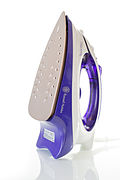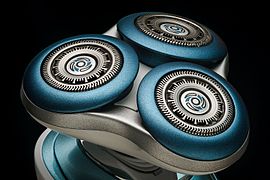User:Colin/PixelPeeping
The pejorative term "pixel peeping" (or "pixel peeper") was coined by the late Michael Reichmann in 2003.
Unfortunately there are some folks who see a bit of noise texture in a 100% crop and somehow jump to the conclusion that the image is crap. It shouldn’t be necessary to point this out, but if the entire image were shown it would be equivalent to an on-screen image almost 3 feet high by 4 feet wide. Of course you’re going to see some noise and other artifacts. But the important thing to keep in mind is how does it look in a typical sized print — say up to 11X17" image size on paper?
Here’s the thing that the pixel peepers don’t get. My testing has shown that photographs produced by this camera can be of professional grade — suitable for stock use, professional publication and fine-art exhibition. The fact that it is somewhat noisier than other cameras at any given ISO, and that there is some occasional CA really has little to do with its usefulness as a photographic tool.— Michael Reichmann, Luminous Landscapes Sony 828 Review 2003.[1]
Viewing photos[edit]
Michael Reichmann is concerned how the whole image will look when viewed typically, not how a crop of the image will look when viewed at close range on a 100 DPI monitor. How should we, as image reviewers, approach this concern? Digital displays and prints on paper remain the two main media for photographic still images, though things have changed somewhat since 2003. Digital viewing vastly outweighs printed media and such viewing has shifted from desktop to mobile devices.
The following tables describe the current state of print and digital display formats and camera sensors. If we ignore any artistic cropping, an 18 megapixel camera should satisfy nearly all commercial still-image work. Such images will fill a page spread in a glossy magazine or the display of even the highest resolution consumer computer displays currently available. They can also easily fill a poster in a bus shelter or billboard.
For video formats, an HD video requires only a 2.5 megapixel camera, and a 4K UHD video requires only a 10 megapixel camera. The future 8K video standard will need a 40 megapixel DSLR!
Most DSLRs have a resolution around 24 megapixels today, which represents only a doubling of linear resolution since the early 6MP cameras. While camera sensor linear resolution has doubled, it has taken longer for desktop display DPI to double, remaining stuck around 100 DPI. Although current displays are higher resolution, they have also got bigger. When viewed at 100% a 24MP image is magnified 2 x compared to a 6MP image. At 100 DPI a desktop display is also magnified 3 x compared to high quality print. This makes pixel-level defects more visible, but the 24MP image is not twice as bad as the 6MP image. It is superior in every way, except to a pixel peeper.
Image types[edit]
- Bold subjects
- Detailed subjects
In the above galleries, I've grouped images into two sets. The "bold subjects" are those that work well at any size and don't reward high magnification other than to satisfy oneself that the image is indeed detailed and sharp. If you've got the image full screen on your display, you don't feel a strong urge to zoom in any further. The "detailed subjects", on the other had, are asking for you to zoom in. When you do, you can see the fretwork on the organ at the Royal Albert Hall, the faces of the disciples in Viborg cathedral, the text on the stained glass window in St Matthew's Church, or the finely painted figures in winter landscape. Perhaps, in order to determine what degree of magnification is fair in which to judge small defects, we should consider what degree of magnification the subject encourages of the viewer.
Media[edit]
The standard for high quality printing is 300 DPI for work that is viewed at close range. Images that are viewed from a distance, such as a poster, only require a considerably lower DPI. A DSLR takes an image of 3:2 aspect ratio. Computer monitors typically have a display around 100 DPI, though the newer High DPI 4K and 5K displays are around 200 DPI and an 8K display exceeds the 300DPI resolution of print.
Print[edit]
The page dimensions are those given by the publisher for submitted images, which include bleed that is cropped to fit the final page size.
| Medium | Page Dimensions |
Page Dimensions px |
Page Megapixels |
3:2 Camera Image px |
3:2 Camera Megapixels |
|---|---|---|---|---|---|
| Snapshot | 6" × 4" 15 × 10 cm |
1800 × 1200 | 2.1 | 1800 × 1200 | 2.1 |
| Portrait | 8" × 10" 20 × 25 cm |
2400 × 3000 | 7.2 | 2400 × 3600 | 8.6 |
| National Geographic Full Page |
7 1/8" × 10 1/4" 181 × 260 mm |
2138 × 3075 | 6.6 | 2138 × 3207 | 6.9 |
| National Geographic Spread |
14" × 10 1/4" 356 × 260 mm |
4200 × 3075 | 12.9 | 4613 × 3075 | 14.2 |
| Vogue Full Page |
8 1/4" × 11 1/8" 210 × 283 mm |
2475 × 3338 | 8.3 | 2475 × 3713 | 9.2 |
| Vogue Spread |
16 1/4" × 11 1/8" 413 × 283 mm |
4875 × 3338 | 16.3 | 5007 × 3338 | 16.7 |
Desktop[edit]
| Display | 16:9 Display Resolution |
16:9 Display Megapixels |
DPI | 3:2 Camera Image px |
3:2 Camera Megapixels |
|---|---|---|---|---|---|
| 23.8" Full HD | 1920 × 1080 | 2.1 | 93 | 1920 × 1280 | 2.5 |
| 27" QHD | 2560 × 1440 | 3.7 | 109 | 2560 × 1707 | 4.4 |
| 23.8" 4K UHD | 3840 × 2160 | 8.3 | 185 | 3840 × 2560 | 9.8 |
| 27" 5K | 5120 × 2880 | 14.7 | 218 | 5120 × 3413 | 17.5 |
| 27" 8K | 7680 × 4320 | 33.2 | 326 | 7680 × 5120 | 39.3 |
Mobile Phone[edit]
| Display | Size | 16:9 Display Resolution |
16:9 Display Megapixels |
DPI | 3:2 Camera Image px |
3:2 Camera Megapixels |
|---|---|---|---|---|---|---|
| Apple iPhone 4 | 3.5" | 640 × 960 | 0.6 | 326 | 640 × 960 | 0.6 |
| Apple iPhone 5 | 4" | 640 × 1136 | 0.7 | 326 | 757 × 1136 | 0.9 |
| Apple iPhone 6 Plus | 5.5" | 1080 × 1920 | 2.1 | 401 | 1280 × 1920 | 2.5 |
| LG G4 | 5.5" | 1440 × 2560 | 3.7 | 538 | 1707 × 2560 | 4.4 |
| Samsung Galaxy S7 | 5.1" | 1440 × 2560 | 3.7 | 576 | 1707 × 2560 | 4.4 |
| Sony Xperia Z5 Premium |
5.5" | 2160 × 3840 | 8.3 | 801 | 2560 × 3840 | 9.8 |
Mobile Tablet[edit]
| Display | Size | 16:9 Display Resolution |
16:9 Display Megapixels |
DPI | 3:2 Camera Image px |
3:2 Camera Megapixels |
|---|---|---|---|---|---|---|
| Apple iPad 1 & 2 | 9.7″ | 1024 × 768 | 0.8 | 132 | 1152 × 768 | 0.9 |
| Apple iPad 3 | 9.7″ | 2048 × 1536 | 3.1 | 264 | 2304× 1536 | 3.5 |
| Apple iPad mini retina | 7.9" | 2048 × 1536 | 3.1 | 324 | 2304 × 1536 | 3.5 |
| Apple iPad Pro | 12.9" | 2732 × 2048 | 5.6 | 264 | 3072 × 2048 | 6.3 |
Cameras[edit]
The sensor-area resolution of cameras in megapixels increased rapidly and almost yearly till 2015. However the increase in linear resolution is more gradual. To double the linear resolution, a bigger jump is required of area:
- 4MP → 16MP
- 6MP → 24MP
- 8MP → 36MP
- 10MP → 42MP
- 12MP → 51MP
| Model | Year | Megapixels | Image Width |
Image Height |
Linear Increase |
|---|---|---|---|---|---|
| Nikon D1 | 1999 | 3 | 2000 | 1316 | -48% |
| Nikon D2H | 2003 | 4 | 2464 | 1632 | -36% |
| Nikon D70 | 2004 | 6 | 3008 | 2000 | -22% |
| Canon EOS-20D | 2004 | 8 | 3504 | 2336 | -10% |
| Sony A100 | 2006 | 10 | 3872 | 2592 | 0% |
| Sony A700 | 2007 | 12 | 4288 | 2856 | 11% |
| Sony A350 | 2008 | 14 | 4592 | 3056 | 19% |
| Sony A55 | 2010 | 16 | 4912 | 3264 | 27% |
| Canon EOS-7D | 2009 | 18 | 5184 | 3456 | 34% |
| Sony A77 | 2011 | 24 | 6000 | 4000 | 55% |
| Sony A7R | 2013 | 36 | 7360 | 4912 | 90% |
| Sony A7RII | 2015 | 42 | 7952 | 5304 | 105% |
| Canon 5DS | 2015 | 51 | 8688 | 5792 | 124% |













